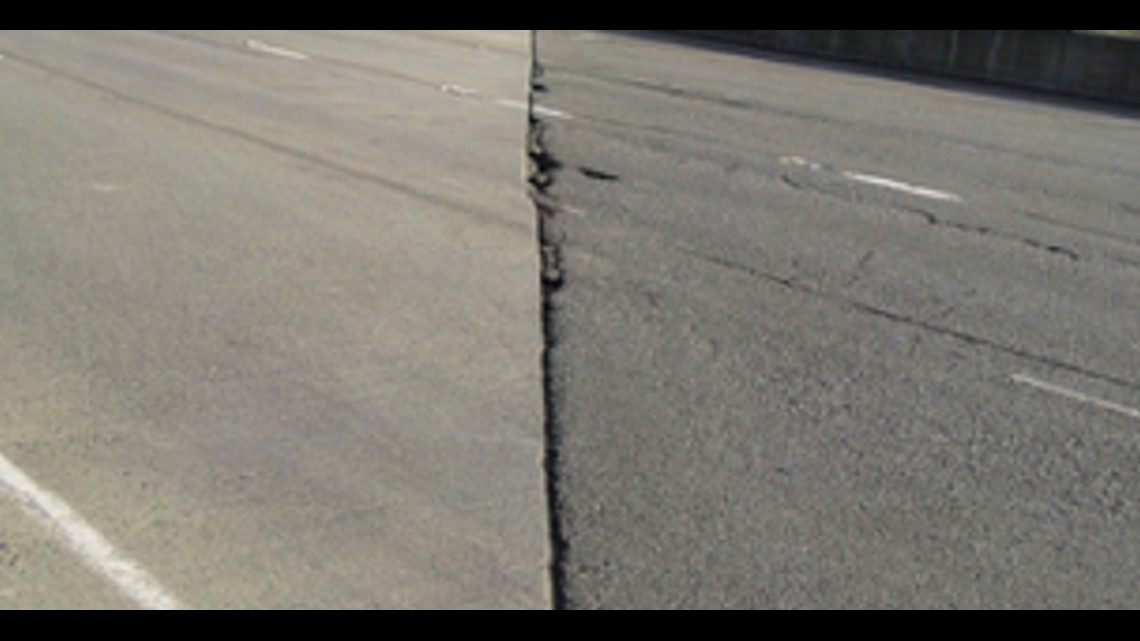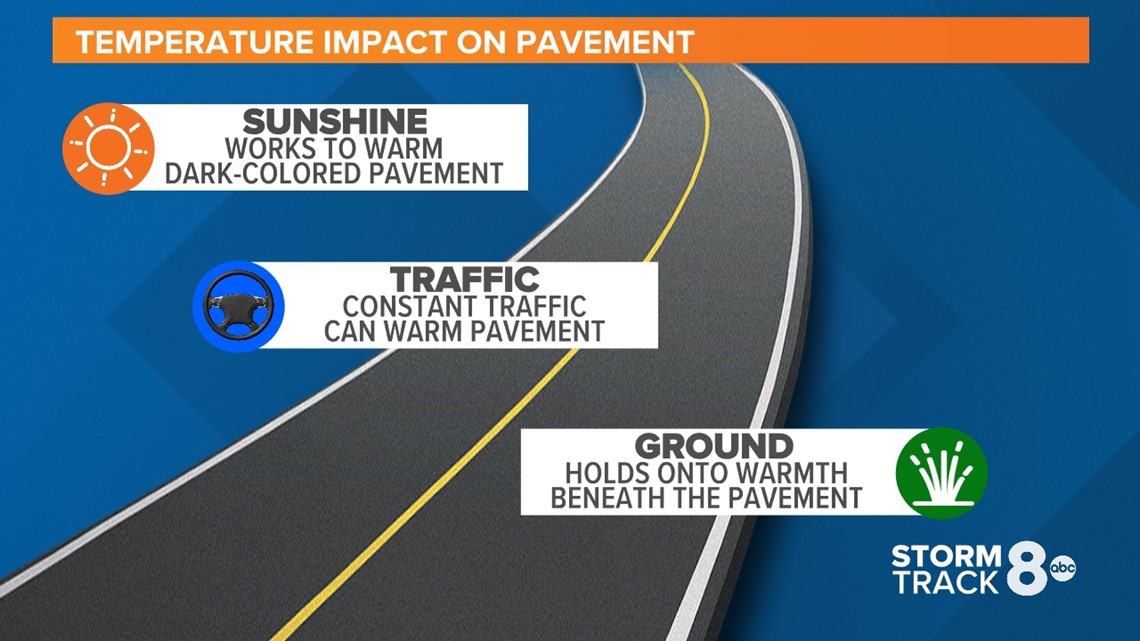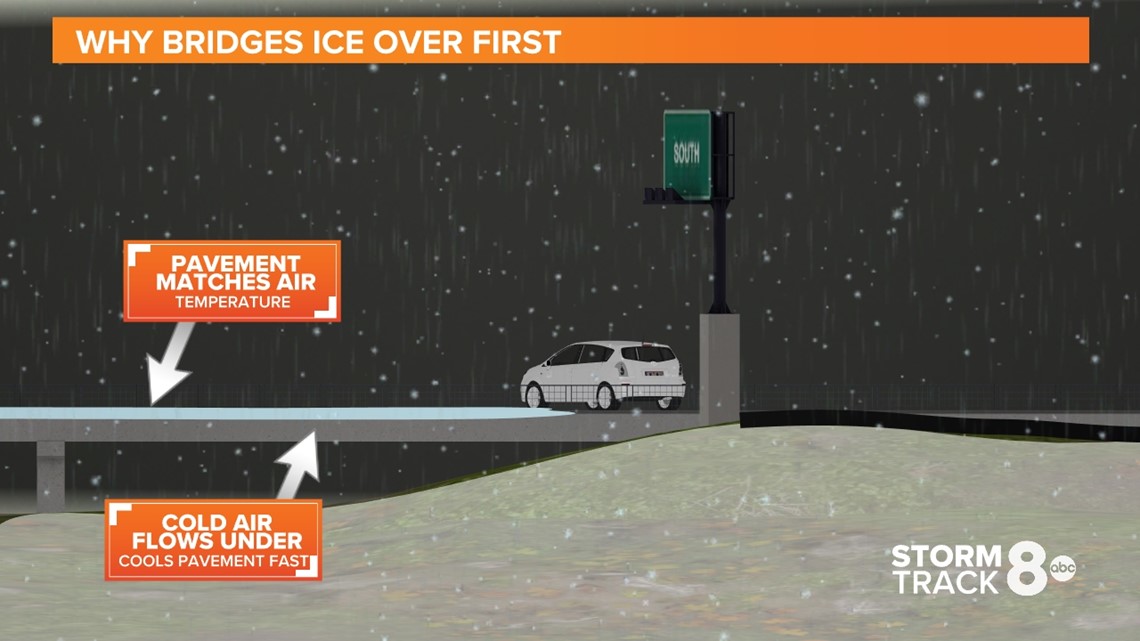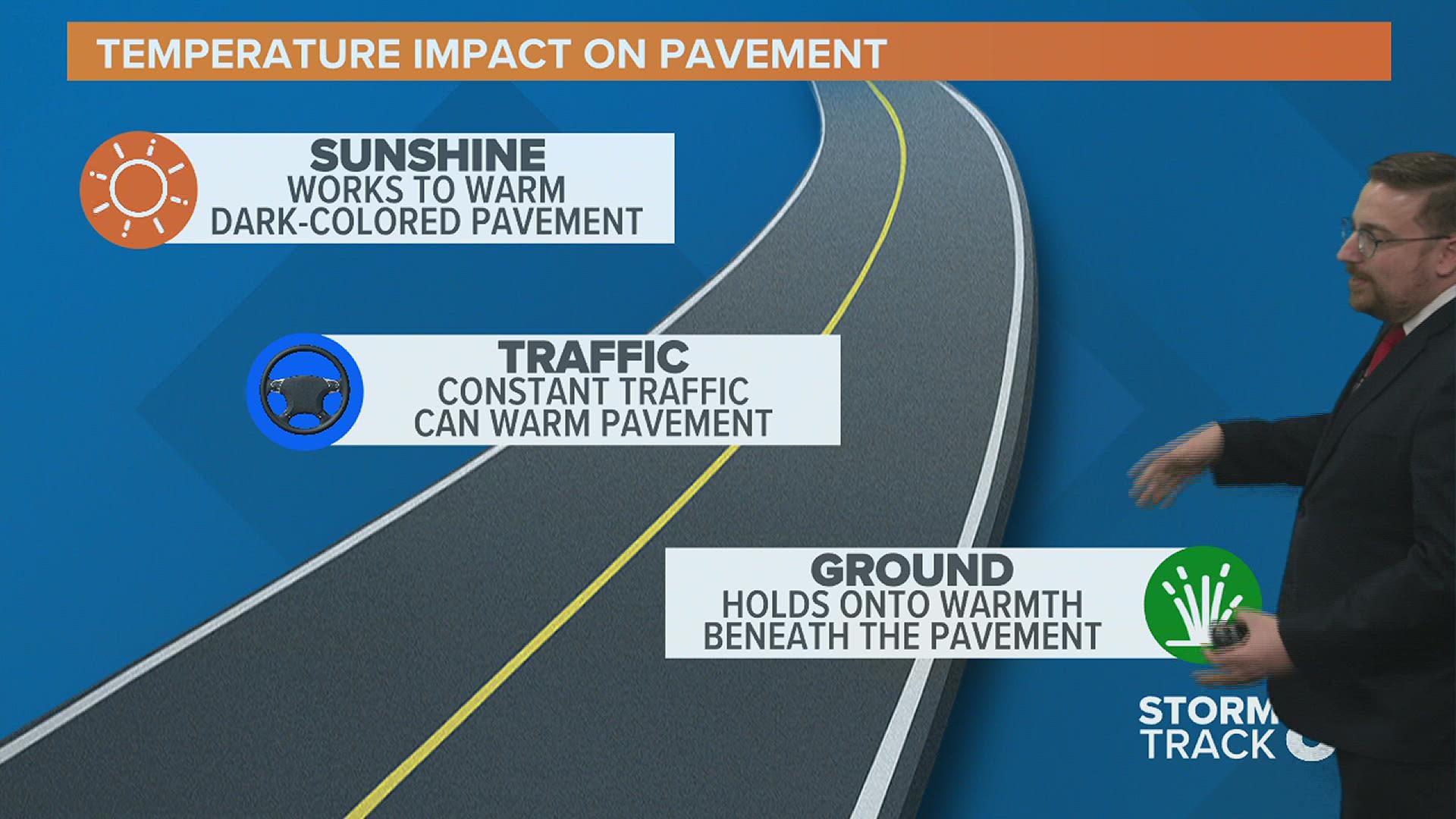MOLINE, Ill. — Cement, asphalt, and even pavers make up the majority of our road surfaces here in the Quad Cities. While each serves the same purpose, giving us a somewhat smooth path to reach our destination, not every surface acts the same when it comes to winter weather.
How do temperatures impact winter road pavement conditions?
It really boils down to a few things.
1) The type of pavement surface
Asphalt with its typically darker surface color tends to absorb more heat energy. We've talked about an object's albedo in past Storm Track 8 University segments. The darker color an object is, the more heat energy it will absorb. With asphalt being darker, and absorbing more heat energy, it really makes for the most ideal choice of driving surface in the winter months. That added heat absorption will not only keep the pavement temperature warmer, it will also work alongside road salt and other chemicals being spread on the roadway, making them more effective.


2) The temperature profile of the air around the pavement
If the air temperature is below freezing, but the ground temperature below the pavement is well above freezing, you can easily have a scenario where falling snow melts as it falls onto the pavement. Unfortunately, the opposite is also true and really responsible for the vast majority of winter weather-related traffic incidents.
Often times, the ground and associated pavement temperature is well-below freezing, especially coming out of a recent cold snap. Meanwhile, the air surrounding the pavement is above freezing with rain falling. That rain will immediately freeze when it comes in contact with the pavement, creating very slick driving conditions.


Researchers have also found that a steady stream of traffic on a road surface can cause enough friction, or interaction between the tires and roadway, that the surface temperature of the pavement can change by as much as two degrees!
3) Where the pavement is located
Roads attached to the ground are more insulated compared to bridges and overpasses. With those types of structures, the roadway is completely exposed on both sides, meaning it is more vulnerable to rapidly falling temperatures and is also more conducive of accumulating both snow and ice.


This is why during winter weather events, we always stress to treat bridges and overpasses with much more caution.
Have a question that you would like me to answer for an upcoming Ask Andrew segment? Submit it, here.

